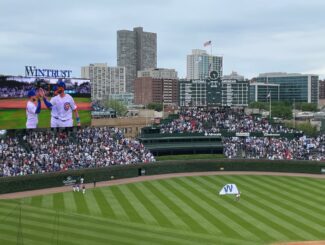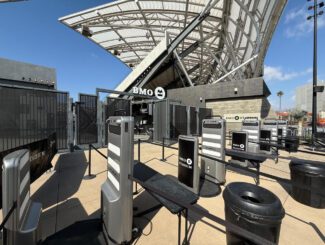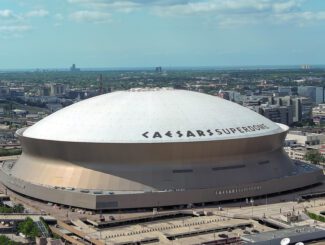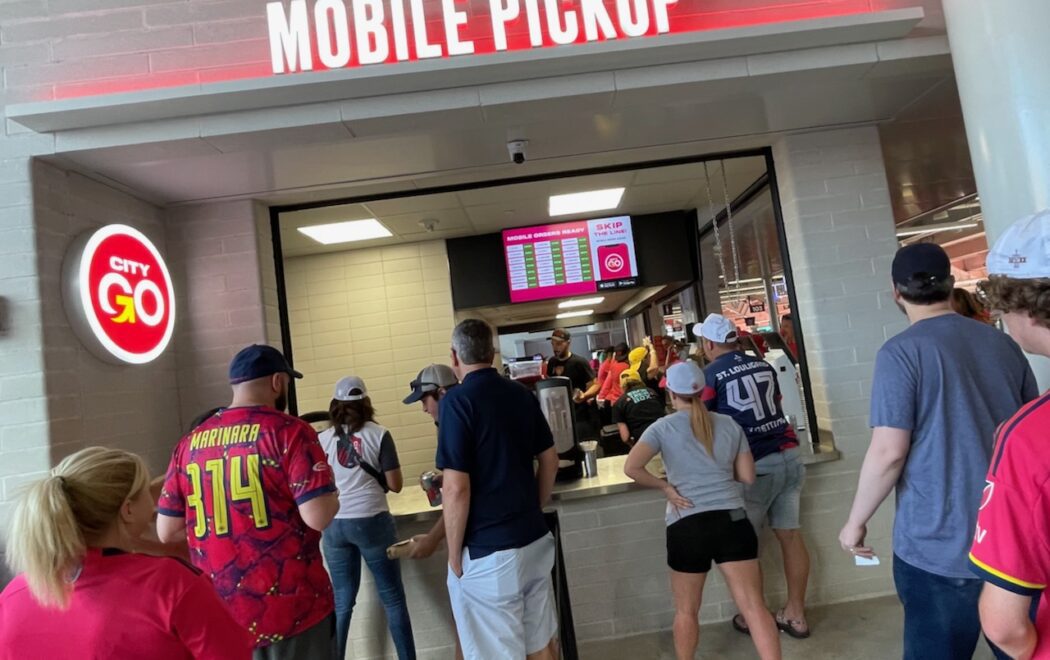
After just 10 home games it’s probably too early to call it a complete success, but our impression so far is that the 100 percent local-provider concessions operation at CityPark in St. Louis looks like a winner, with facets that other teams might want to duplicate at their own venues.
To us, the all-in combination of great local food and forward-looking technologies is a perfect marriage. Even while MLS expansion team St. Louis City SC and its food providers work their way around the inevitable first-time challenges of the innovative operation, it’s clear that the structural decsions make sense and should be looked at as examples of how other venues might use technology to enhance the fan experience – without making it all about the technology.
Here’s a quick take on what we see that works in St. Louis, from our in-depth reporting as well as our personal visit to a home game in June:
1. LOCAL FOOD WORKS
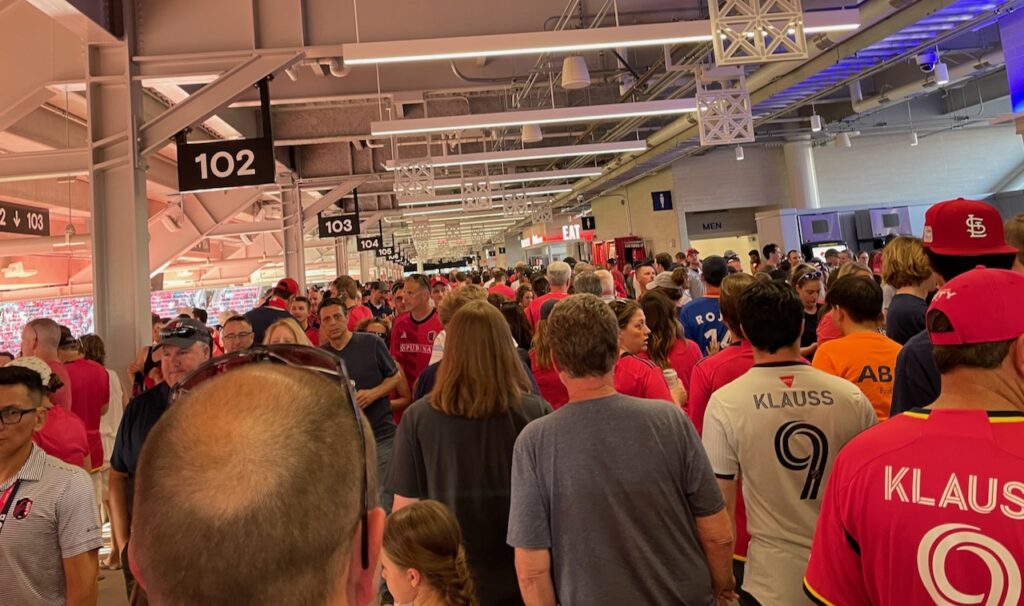
Bringing local food providers into stadiums is not something new – pretty much every stadium we know has at least one or a few signature local dishes, ones either from loved providers from the host city, or stadium versions of treasured local dishes.
But having 100 percent local providers, which is what CityPark has, is (as far as we know), unique. And we think it is a decision that resonates beyond just the enticing sights and smells of craft-style cooking.
First of all, local food seems to come with a built-in promotional value, the kind of attraction that makes people love small hometown places or innovative tastes found at enterprising food trucks. People go out of their way to find the good food they love, and making it available in a stadium setting means that fans who already know the provider will seek them out on game day, something that has to be helping provide more concession sales than normal.
Allowing the owners and operators of the food establishments to run the stadium stands (instead of concessionaire staffers) also is a great decision, since those people know best on the hows and whys of what made their food attractive in the first place. While dealing with stadium technologies, especially CityPark’s order-ahead app, can be a challenge, there can’t be too many business more ready to adapt than small restaurants, which have needed to overcome many hurdles in the past few years just to survive.
And even if fans have never heard about the providers before, the fantastic presentation at most of the stands at CityPark provides an instant lure to a hungry eventgoer. Enthusiastic operators smashing down fresh ground beef onto a grill sizzling with burgers and bacon, others rolling fresh hot tortillas for tacos are easy enticements for fans to order more. And the integration of technologies like the order-ahead app and checkout-free stands means that even at the most desirable stands, lines never get too long. And if one line is too long, there are many more local choices to pick from, not just one or two alternatives to the sometimes bland stadium fare.
2: FIND THE RIGHT TECH FOR THE SITUATION
Like venues everywhere else, CityPark is still working its way through trial and error to find the right technology fit for each separate food provider. But out of the gate, the team seems to have planned well with its mix of different technologies that provide separate comfort levels for both providers and customers.
One example is the team’s order-ahead feature in the team app, which currently has 10 providers participating. According to the providers we interviewed, figuring out how to balance food production flow between the instant app orders and the orders coming from in- person lines is a hard challenge.
But for those who are up to it, the additional orders are also a business bonus. According to CityPark, the app orders can account for 20 to 40 percent of a stand’s total orders.
The stadium’s three checkout-free stands, powered by technology from Zippin, are another technology that seems to be growing in acceptance from both providers and fans. While some fans may take a few more visits to warm to the much-different shopping experience checkout- free presents, others are already catching on and checking out more frequently.
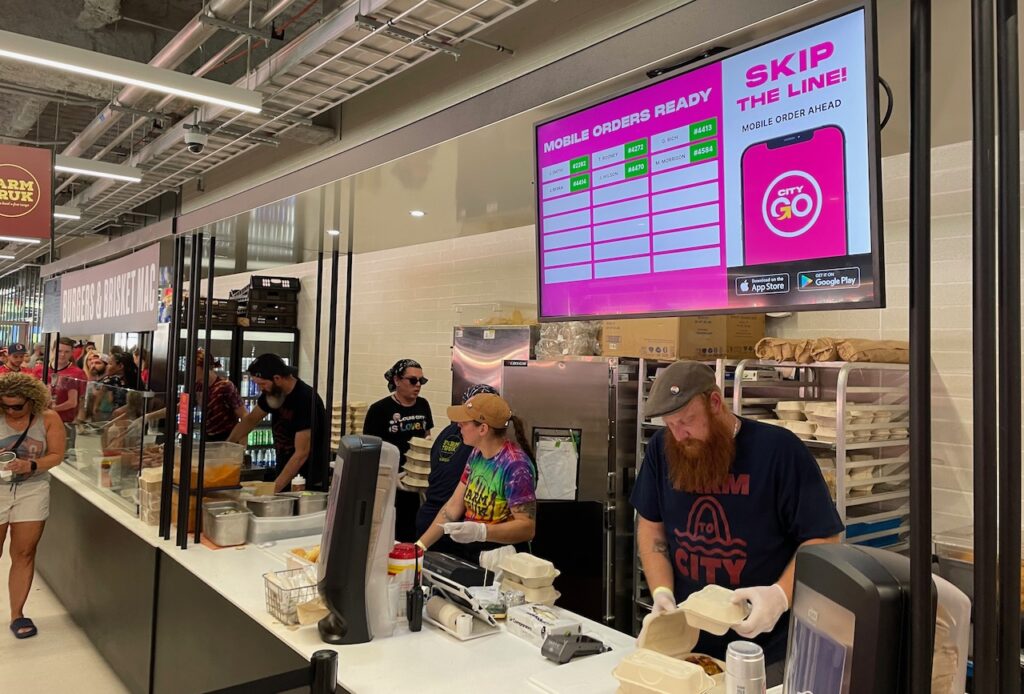
According to the team, they are currently seeing 33 percent repeat customers at the checkout-free stands, a stat that has the team already looking to add more checkout-free stands as quickly as they can. One possible option is the “Zippin Lane” configuration, which is more streamlined and drink-focused than the current stands, which all have a hot-food kitchen area as part of the offering.
3: CHANGE THE BEHAVIOR
Even the best food and the fastest technology might not be enough to overcome traditional fan behavior of showing up at the last minute before kickoff, or waiting until the halftime whistle blows to try to get food and drink. One of the big factors in the food-program success at CityPark seems to be fans responding to the team’s efforts to get people to the stadium early, and using the app when possible to avoid standing in lines.
Just asking fans to arrive early probably isn’t enough. That’s why St. Louis, like many other venues, is using enticements like DJs and bands playing on a plaza space outside the stadium during pregame times, creating a sort of team-sponsored tailgating environment. By providing pregame entertainment the team helps make showing up early part of the event – and by having many choices for great food available, it’s easier to convince fans that getting there early is a good use of their time.
Order-ahead apps and express-pickup windows are another innovation that many teams have tried in some form or fashion, but pairing them with high-level food options and spacing them widely around the stadium as St. Louis has seems to contribute to a higher level of participation. The fact that the team also created its own app from scratch to make sure the order-ahead program worked at a high level is also a likely contributor to the program’s fast adoption.
While things like local food providers and advanced concession technology are in place at many other venues, the level of commitment to both sides of that equation and the attention paid to their combination is what makes the difference at CityPark.
Editor’s note: This post is related to our seven-part report on the concessions operations at St. Louis City SC’s CityPark. To go to the start of the report, click this link. You can also download a PDF of the full report, with more photos.





